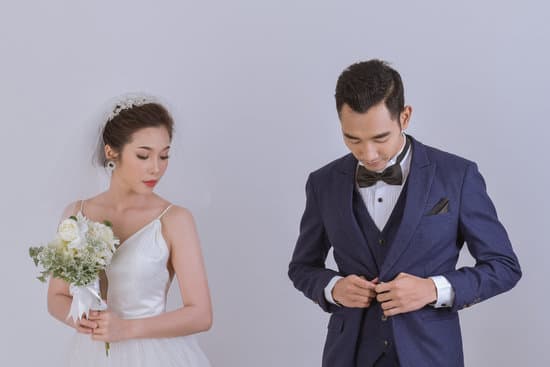What is white wedding? White weddings are a cherished tradition that has become synonymous with love and commitment. From the elegant white wedding gowns to the heartfelt ceremonies, this tradition holds deep meaning for many couples around the world.
White weddings have a rich historical background that dates back centuries. The use of white as the predominant color in weddings can be traced back to ancient Rome and Greece, where it symbolized purity and innocence. Over time, white weddings evolved into elaborate ceremonies with intricate customs and rituals.
The symbolism of white wedding gowns has remained consistent throughout history, representing purity, beauty, and new beginnings. The evolution of white wedding traditions has seen changes in styles, fabrics, and designs, but the overarching symbolism of the color white remains a constant factor in these celebrations of love.
Historical Background of White Weddings
White weddings have become synonymous with modern-day matrimonial ceremonies, but their origins can be traced back to ancient civilizations. The historical background of white weddings dates back to the Victorian era when Queen Victoria made a bold statement by wearing a white gown for her wedding to Prince Albert in 1840.
Prior to this influential royal event, brides would wear dresses in various colors, depending on cultural customs and personal preferences. However, Queen Victoria’s choice of a white wedding gown sparked a trend that has endured through the centuries.
The significance of the color white in weddings has deep-rooted symbolism across different cultures and time periods. White is often associated with purity, innocence, and new beginnings, which align perfectly with the sentiments of marriage. In many societies, white has been traditionally regarded as a symbol of joy, renewal, and union between two individuals. The emergence of the white wedding dress as a symbol of purity can be attributed to religious beliefs and societal norms surrounding marriage.
As societies evolved over time, so did the traditions associated with white weddings. What started as a fashion statement by Queen Victoria soon became a widely accepted practice that symbolized not only purity but also wealth and status.
White wedding gowns became more elaborate and intricate as social norms changed, reflecting both personal style choices and cultural influences. Today, the history behind white weddings continues to shape modern bridal fashion trends and customs around the world, highlighting the enduring appeal and timeless elegance of this traditional practice.
Meaning and Symbolism of White Wedding Gowns
A white wedding gown is often considered the epitome of bridal attire, symbolizing purity, innocence, and tradition. The choice of a white wedding dress dates back to the Victorian era when Queen Victoria wore a white gown for her wedding to Prince Albert in 1840. This iconic moment popularized the tradition of wearing white on your wedding day among Western brides.
Symbolism of White
The color white has long been associated with purity and new beginnings, making it a natural choice for brides on their wedding day. White also symbolizes innocence and simplicity, reflecting the bride’s unspoiled beauty as she embarks on her journey into marriage. Additionally, white is often seen as a symbol of light, goodness, and positivity, creating a sense of hope and optimism for the future.
Historical Significance
In many cultures, the color white is linked to rituals of cleansing and renewal, making it a fitting choice for weddings which mark the beginning of a new chapter in one’s life. As societies evolved over time, so did the symbolism attached to white wedding gowns. While some may view them as outdated traditions rooted in old-fashioned values, others embrace them as timeless symbols of love and commitment that transcend cultural differences.
Personal Meaning
For many brides, choosing a white wedding gown goes beyond just fulfilling a tradition; it holds personal significance and sentimental value. The selection process involves finding a dress that not only aligns with societal expectations but also resonates with individual beliefs and desires. Ultimately, the meaning behind wearing a white wedding gown varies from person to person, reflecting their unique interpretation of what it symbolizes in their own love story.
Evolution of White Wedding Traditions
The evolution of white wedding traditions is a fascinating journey that reflects the changing values and beliefs of societies over time. While the concept of a “white wedding” may seem like a timeless tradition, it is actually a relatively modern practice with deep roots in history.
Origins of the White Wedding Gown
The tradition of wearing a white wedding gown can be traced back to Queen Victoria’s marriage to Prince Albert in 1840. Prior to this royal wedding, brides would wear their best dress regardless of its color. However, Queen Victoria’s choice to wear a white gown sparked a trend that continues to this day. The color white was seen as a symbol of purity and innocence, aligning with Victorian ideals of morality and virtue.
Symbolism and Meaning Behind the White Dress
The white wedding gown became synonymous with new beginnings, purity, and the start of a life-long commitment between two individuals. Over time, the symbolism behind the white dress has evolved to represent not just purity but also tradition, elegance, and beauty. Brides often choose to wear white dresses as a nod to this centuries-old tradition, embracing both its historical significance and timeless allure.
As society continues to evolve and cultural norms shift, so too do the traditions surrounding weddings. The evolution of white wedding traditions reflects these changes while still holding onto the core values and symbolism that have made it such an enduring practice in modern times.
Modern Trends in White Weddings
White weddings have come a long way from their origins to become a symbol of love, purity, and elegance in modern times. One of the modern trends in white weddings is the personalization of the ceremony and reception to reflect the couple’s unique style and personalities. From customized vows to themed decorations, couples are embracing the opportunity to make their white wedding truly one-of-a-kind.
Another trend in white weddings is the incorporation of technology to enhance the guest experience. Couples are using social media platforms to create personalized hashtags for their wedding day, allowing guests to easily share photos and messages online. Additionally, live streaming services have become popular for couples who want to include distant friends and family members in their special day.
In terms of fashion, modern white wedding trends are moving away from traditional ball gowns towards sleeker silhouettes and contemporary designs. Brides are opting for non-traditional colors like blush, champagne, or even black for their wedding dresses, while grooms are experimenting with colored suits and accessories. This departure from tradition reflects a shift towards individuality and breaking away from conventional norms in white weddings.
| White Wedding Trend | Description |
|---|---|
| Personalization | Couples customize their ceremonies and receptions to reflect their unique styles. |
| Technology Integration | Social media hashtags and live streaming services enhance guest experiences. |
| Fashion Evolution | Brides explore non-traditional colors while grooms opt for unique suit styles. |
Differences Between White Weddings and Traditional Weddings
A white wedding is a term commonly used to describe a traditional Western wedding ceremony where the bride typically wears a white wedding gown. But what exactly differentiates a white wedding from other types of weddings? Here are some key distinctions to consider:
- Attire: One of the most noticeable differences between a white wedding and traditional weddings in various cultures is the attire worn by the bride. In a white wedding, the bride usually wears a white gown symbolizing purity, innocence, and tradition. On the other hand, in traditional weddings in cultures like Indian or Chinese, brides often wear colorful attire with intricate designs.
- Ceremony: The ceremony itself in a white wedding typically follows Christian traditions, including exchanging vows, rings, and being pronounced husband and wife by an officiant. In contrast, traditional weddings can involve unique rituals and customs specific to the culture they represent.
- Decorations: White weddings often feature a color scheme of white, silver, and pale pastel hues to create an elegant and romantic ambiance. Traditional weddings may incorporate vibrant colors and symbols that hold cultural significance for the couple getting married.
It’s important to note that while white weddings have become popular worldwide due to their association with Western traditions, many couples today opt for a blend of both white wedding elements and their cultural customs to create a truly unique celebration that reflects their identities and values.
Ultimately, whether you choose to have a white wedding or embrace your heritage through traditional ceremonies, what matters most is creating a day that is meaningful and memorable for you and your loved ones.
Popular White Wedding Rituals and Customs
One of the most iconic aspects of a white wedding is the variety of rituals and customs that are often included in the ceremony. These rituals add depth and meaning to the celebration, creating a memorable experience for both the couple and their guests.
One popular ritual in a white wedding is the lighting of a unity candle, symbolizing the union of two individuals into one married couple. This symbolic act signifies the coming together of two families and the creation of a new, united family unit.
Another common custom in white weddings is the exchange of rings between the couple. The wedding bands are often seen as symbols of eternal love and commitment, with their circular shape representing never-ending love and unity.
The exchanging of rings also serves as a public declaration of each partner’s willingness to commit to their relationship for a lifetime. It is a touching moment that holds significant emotional weight for many couples as they exchange vows and promise to love, honor, and cherish each other.
In addition to these rituals, white weddings often incorporate traditional customs such as throwing rice or confetti at the newlyweds after they have exchanged vows. This practice dates back centuries and is thought to bring good luck and fertility to the newly married couple.
The joyful showering of rice or confetti symbolizes well-wishes for prosperity, happiness, and abundance in their life together. These time-honored traditions add an element of fun and festivity to the wedding day while carrying on age-old customs that have been passed down through generations.
Planning a White Wedding
When it comes to planning a white wedding, there are several key tips and ideas that can help make your special day even more memorable. From choosing the perfect white wedding gown to selecting the ideal venue, every detail matters in creating the dream wedding you’ve always envisioned. Here are some essential tips to keep in mind as you plan your white wedding:
1. Start by setting a budget: Before diving into the planning process, it’s crucial to establish a realistic budget for your white wedding. This will help guide your decisions on aspects such as venue, catering, decorations, and entertainment.
2. Create a timeline: Planning ahead is key to ensuring that everything falls into place smoothly on your big day. Make sure to create a timeline that outlines important milestones leading up to the wedding, such as booking vendors, sending out invitations, and scheduling dress fittings.
3. Choose the right color scheme: While white is the traditional color for weddings, incorporating complementary shades can add depth and visual interest to your event. Consider combining white with soft pastels or metallic accents for a sophisticated and elegant look.
4. Personalize your ceremony: Infuse your personality as a couple into the ceremony by incorporating meaningful rituals or traditions that reflect your values and beliefs. Personal touches such as writing your own vows or including sentimental decorations can make your white wedding truly unique.
5. Hire professional vendors: To ensure that every aspect of your white wedding runs smoothly, consider enlisting the help of experienced vendors such as photographers, florists, and caterers who specialize in creating beautiful weddings. Their expertise can take the stress out of planning and allow you to enjoy every moment of your special day.
By following these tips and ideas for planning a white wedding, you can create an unforgettable celebration that captures the timeless elegance and romance of this cherished tradition.
Impact of White Weddings on Popular Culture
White weddings have had a significant impact on popular culture, influencing everything from fashion to music to movies. The iconic image of a bride in a white gown has become synonymous with romance and marriage in media and entertainment. From classic Hollywood films to chart-topping love songs, the depiction of white weddings has shaped our collective understanding of love and commitment.
One of the most notable ways that white weddings have influenced popular culture is through fashion. The traditional white wedding gown has become a staple in bridal fashion, inspiring countless designers to create stunning designs for brides around the world. White wedding gowns are often featured in high-profile celebrity weddings, further solidifying their place as a symbol of elegance and sophistication.
Additionally, the rituals and customs associated with white weddings have become ingrained in popular culture. From the tossing of the bouquet to the cutting of the cake, these traditions are widely recognized and celebrated in various forms of media.
Movies and television shows frequently feature elaborate white wedding ceremonies, showing audiences around the globe what is considered a typical western-style wedding. Overall, white weddings continue to shape and influence popular culture, setting trends and creating lasting impressions on society as a whole.
Conclusion
White weddings have come to symbolize purity, elegance, and the beginning of a new chapter in one’s life. Through the centuries, this tradition has evolved and adapted to changing times while still retaining its timeless appeal. From the historical background of white weddings to the modern trends that continue to shape them today, it is clear that this tradition holds a special place in our culture.
The symbolism of white wedding gowns, once associated with purity and wealth, has now become a universal symbol of love and commitment. The evolution of white wedding traditions has seen various customs merge and blend together, creating a unique tapestry of rituals that celebrate the union of two individuals. Despite the differences between white weddings and traditional ceremonies, the essence of love and unity remains constant.
In conclusion, whether you opt for a grand ballroom affair or an intimate beach ceremony, the beauty of a white wedding lies in its timelessness. As popular culture continues to showcase these celebrations through movies, television shows, and social media platforms, one thing remains constant: the allure and romance of what is white wedding will continue to captivate hearts for generations to come.
Frequently Asked Questions
What Does Having a White Wedding Mean?
Having a white wedding typically refers to a Western-style wedding ceremony that includes traditions such as wearing a white wedding dress, exchanging vows in a church or other religious setting, and having a formal reception. It is often associated with the idea of purity and new beginnings.
What Is the Meaning of White Marriage?
The term “white marriage” can have different meanings depending on the context. In some cases, it may refer to a marriage between two people who are both of European descent. In other contexts, it could be used to describe a marriage that lacks passion or excitement, implying that it is bland or lacking in emotional depth.
What Is the Difference Between a Traditional Wedding and a White Wedding?
The main difference between a traditional wedding and a white wedding lies in cultural and regional variations. Traditional weddings often vary significantly depending on the customs and practices of different cultures, religions, or countries.
On the other hand, white weddings typically follow the customs popularized by Western culture – such as wearing a white gown, exchanging rings and vows in front of guests, and having a formal sit-down dinner at the reception.

I have been involved in marriages for over 20 years helping couples and singles understand more about them.





